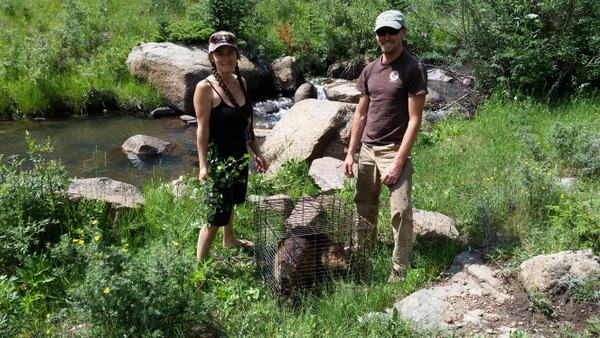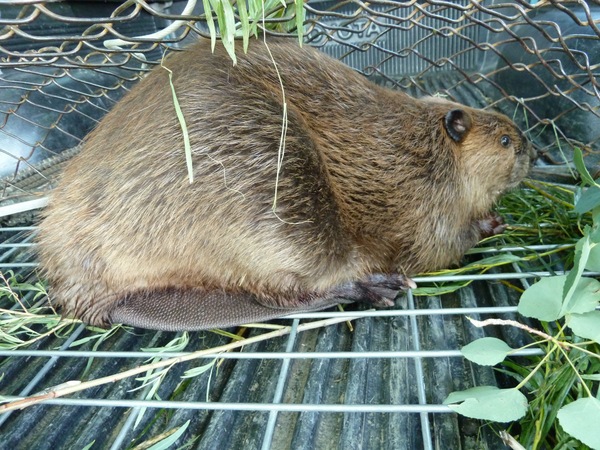
By Andrea Granahan
Beavers have had a bad rap. Too many people think they destroy forests and flood farmland, but ecologists Kate Lundquist and Brock Dolman are out to change that.
At Occidental Arts and Ecology Center’s Water Institute, they are working to spread the word that beavers (Castor canadensis) may be important in helping us adapt to climate change and live through droughts.
For their efforts, they have been recognized by the Paula Lane Action Network.
For a decade the pair have tried to change state beaver policies that date back to 1942 and list the animal as an exotic nuisance. They want the state to reintroduce beavers, learn to coexist with them and use them as a labor force in water conservation.
“Beavers work 24/7, and they do it for free,” Lundquist said.
Lundquist and Dolman were working on salmon restoration when they discovered how valuable beavers are.
Many people believe that beaver dams impede salmon’s progress as they swim upstream to reproduce, but “Native Americans had a saying that beavers taught salmon to jump,” Dolman said.
“The dams really don’t block the fish going upstream. Instead, the dams slow down the flow, creating pools where the salmon can rest as they make their way upstream and where the young salmon going downstream can find refuge. It’s called metabolic refugia.”
Other states are way ahead of California where beavers are concerned, Lundquist said. She recently traveled to Colorado to work with Sherrie Tippi, who has been trapping and relocating beavers for 29 years.
The 1942 policies came out of a belief that beavers aren’t native to Northern California or the Sierra because it is too cold for them above a certain altitude. New evidence disproves that belief, the ecologists said.

A prehistoric beaver dam has been discovered in the mountains and proves the species has no problem dealing with cold. Old sea captains’ logs talk about the plentiful beavers north of San Francisco, and Mariano Vallejo wrote about a beaver dam at the town of Bodega.
Dolman said state, federal and local agencies have spent a lot of money on Sonoma County erosion control projects in places such as Willow Creek, although “beavers can do the same work better and for free. Some have moved back in the Russian River and the Laguna. We should make them welcome.”
What happens if a beaver dam causes a valuable vineyard to flood?
Dolman and Lundquist say a number of simple mechanisms can control beavers.
They respond to sounds of flowing water, for example, and start building dams when they hear it. The height of a dam can be controlled by simply installing a pipe that allows water to flow through it without producing the sound of running water.
That was done recently in Martinez when a raft of beavers appeared and started building a dam. City leaders who were worried about floods might have trapped and killed the beavers in earlier decades, but now the public was intrigued with the family and its playful kits.
A pipe system was installed, the beaver pond was filled with fish, and in short time river otter, mink and birds were attracted.
The pond also attracted tourists who came to Martinez to watch from the bridge.
Beavers also can be easily excluded from places such as vineyards where they are not wanted, Lundquist said, using a low solar-powered electric fence.
“We just have to persuade the state to revisit the policies in the light of new evidence and reclassify the beaver,” Dolman said. “We’d really like to be able to relocate beaver.”
Learn about beavers at 7 p.m. Friday as Brock Dolman and Kate Lundquist explain how beavers can help restore watersheds and increase climate change resiliency. The free lecture takes place at Pepperwood Preserve, off Franz Valley Road at Porter Creek Road. Info and directions: pepperwoodpreserve.org, 591-9310.
(Excerpted from The Press Democrat)





